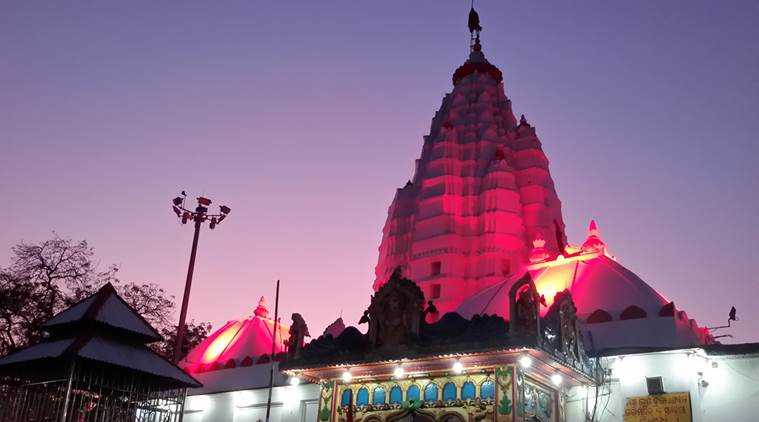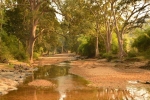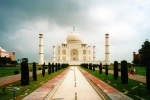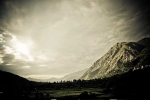Sambalpur Tourism
Sambalpur is the gateway to the western zone of Orissa. It abounds in prolific rivers, lavish hills, lush green forests and affluent wildlife. It is a beautiful amalgamation of modernity and culture. Holding a significant historical importance, the place also has a flourishing textile and handloom industry popular for its unique patterns and style. In addition to that, Sambalpur has a flourishing tribal life with exclusive exquisite folk songs-dances and culture. Sambalpur got its name from Devi Samaleswari who is the main goddess of the region. One can also visit wildlife parks here to enjoy the beauty of nature that Sambalpur has in plenty. The area is known for the world famousHirakud Damwhich is the main attraction for the tourists here.
There are also several temples holding great significance, with people coming from all over with a strong sense of faith and the holy deity bestowing happiness and wealth upon the devotees. Sambalpur is the biggest city of western Odisha and is famous for the number of freedom fights that took place here which make this place historically important too.
Download Sambalpur PDF Guide >
What's Great?
Located in the Mahanadi river basin, Sambalpur provides for an amazing view of the mighty Hirakud dam.
What's not so Great?
The region is prone to floods caused by the river Mahanadi.
For Whom
Sambalpur is a home to many temples and hence great for people who wish to explore religious places.
Land of Festivals and Culture
Sambalpur is a culturally rich city of west Odisha. This city named after Goddess Samaleswari is home to the Samaleswari temple located in the heart of the city. The annual Sambalpur Lok Mahotsav is a great celebration of art and music. The Sitalsasthi Carnival which celebrates Lord Shiva and Goddess Parvati's marriage is another major festival of the city. It is an important commercial centre, famous for its tie-and-dye lkat work. The folk dances like the Karama dance are also very popular. It is also an important diamond trading centre.
History of Sambalpur
The history of Sambalpur dates back to prehistoric times. It is mentioned in the book of Ptolemy and records of Xuanzang. Later in the 4th century, Samudragupta defeated King Mahendra of Koshala and Sambalpur fell in his territory. Over the decades, it was ruled by multiple dynasties, including the Paduvanti, Samavanti and the Chauhans. In 1804, during the rule of the Marathas, Sambalpur was annexed by the British. It witnessed quite a few freedom struggles during the British supremacy.
Post-independence, the princely state of Sambalpur was divided into four separate administrative districts called Sambalpur, Bargarh, Jharsuguda and Deogarh.
Cattle Island
The cattle island is one of the main attractions of the place. It is basically a hill submerged in the Hirakud reservoir. It was supposedly a village initially but during the construction of the Hirakud dam, the villagers were asked to evacuate the village and move to nearby areas. When relocating, some of the villagers left behind their domesticated cattle.
Over the period of time, the cattle bred in the wild vegetation and grew manifold. They underwent evolution and so are bigger in size, a lot faster and agile than the domesticated ones. They are wild and ferocious and extremely protective of their territory. Most of them are creamy white coloured and give an ethereal look to the island.
One Day Itinerary
While you are on a trip to Sambalpur there are a few essentials that you should not miss. First off, there is Hirakud dam which is famous all over the country and is the largest earthen dam in the world creating a 35km long lake. Just near this dam, we have a wildlife sanctuary and eco cottages to spend your nights here as this might take your whole day. There are several temples in the region which are worth the visit and have historical significance.
Restaurants and Local Food in Sambalpur
Some of the most loved dishes of people of Sambalpur is Bhat Pakhala which is recommended especially for summers to cure or avoid heat strokes, Basi bhat made by soaking rice overnight in an earthen pot, aaloo baingan jhol, panas tarkari, Pudala baigan, Kukra jhol, Dai baigan, Jhuri Bhaja and several others. People in Odisha savor sweets after their main course food and there are different kinds of sweets that are available and loved by the people here.
View 2 Restaurants in Sambalpur >>
Sep-Maris the best time to visit Sambalpur
Sambalpur's climactic conditions are generally extreme. This city has hot summers temperature rising to 40 degrees Celsius and very cold winters when temperature even falls to 1 degree Celsius and heavy rainfall during the rainy season. The best time to visit the town is from September-March.
Weather in Sambalpur
Loading...
Sambalpur in Summer (April - July)
Summers are extremely harsh with the temperature rising up to 40 degrees Celsius. The scorching heat of the sun makes travelling difficult.
Sambalpur in Monsoon (August - September)
Monsoon in Sambalpur is characterised by heavy rainfall. This often leads to flooding.
Sambalpur in Winter (November - February)
Winters in Sambalpur are pretty chilly, with the temperature getting as low as 1 degree Celcius. However, if the days are sunny, you can enjoy the place.
Monthly Weather in Sambalpur
Month
Avg. Minimum (°C)
Avg. Maximum (°C)
January
13
26
February
16
31
March
20
35
April
27
41
May
28
41
June
27
38
July
25
31
August
26
31
September
25
32
October
22
32
November
16
28
December
13
26
Comments on Sambalpur
Post Your Comment


 Hirakud Dam
Hirakud Dam Shopping in Sambalpur
Shopping in Sambalpur Samaleswari Temple
Samaleswari Temple Leaning Temple of Huma
Leaning Temple of Huma Tikarpada Wildlife Sanctuary
Tikarpada Wildlife Sanctuary Puri
Puri Rourkela
Rourkela Goa
Goa Agra
Agra Manali
Manali